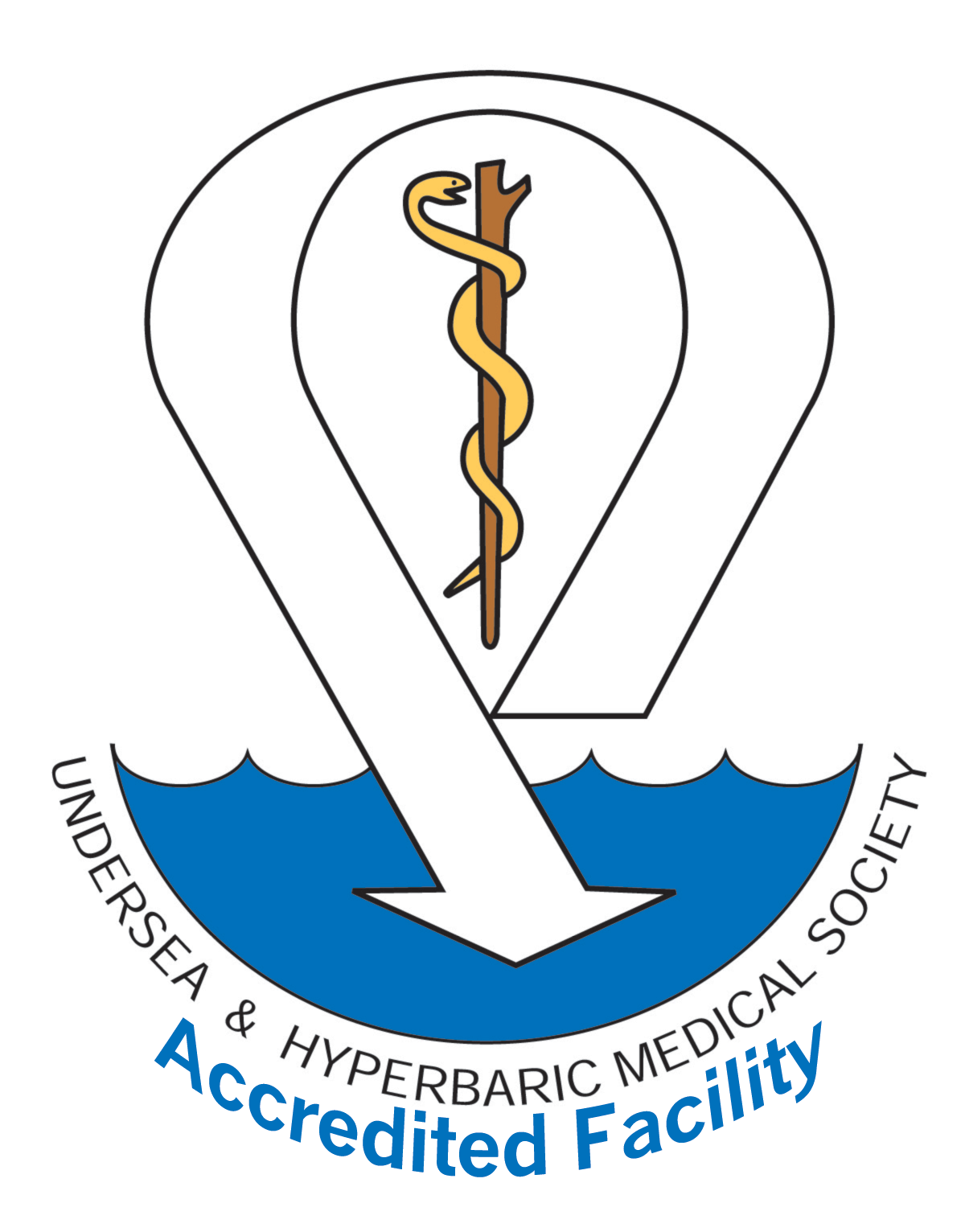Wound Care Specialists Offer Compassionate Care and Faster Healing
Our bodies do not always heal quickly and routinely – healing is a complicated process. If a wound hasn't healed after four weeks of standard medical care, we consider it a problem wound that needs special attention. Call Freeman Wound Care & Hyperbaric Medicine for an appointment today; no referral necessary.
Freeman Wound Care & Hyperbaric Medicine can effectively treat many types of wounds, including:
- Diabetic wounds
- Varicose vein ulcers
- Arterial leg ulcers
- Pressure ulcers
- Postoperative wounds
- Damage from radiation treatment
Wound Care Services offered
- Evaluation and wound assessment
- Complete evaluation and medical history
- Continuity of care
- Exam by a wound care/hyperbaric physician
- Individualized treatment plan
- Instruction in education
- Referrals
Hyperbaric oxygen therapy allows greater amounts of oxygen to dissolve in the patient’s bloodstream and reach body tissues. This helps the body repair wounds and fight infection.
Under the direction of the area’s only board-certified hyperbaric medicine specialist, patients receive hyperbaric treatment while reclining in a pressurized chamber filled with oxygen-rich air. While cradled comfortably in one of our hyperbaric chambers, patients may communicate with the staff through an intercom system. They may also sleep, read or watch TV.
Freeman’s hyperbaric medicine program effectively treats many types of wounds and conditions, including:
- Acute thermal burn injury
- Air or gas embolism
- Arterial insufficiencies
- Bone infection
- Brain abscess
- Carbon monoxide poisoning
- Compromised skin flap or graft
- Crush injuries
- Decompression sickness
- Delayed radiation injury
- Gas gangrene
- Idiopathic sensorineural hearing loss (a type of sudden hearing loss)
- Severe anemia
- Soft tissue (flesh eating) infection
Hyperbaric oxygen therapy helps the patient’s wounds heal through:
- Increased oxygen delivery to the injured tissue
- Greater blood vessel formation
- Improved infection control
- Preservation of damaged tissue
- Elimination of toxic substances
- Reduced effects from toxic substances
- Reduction or elimination of tissue obstruction

An ostomy allows bodily waste to pass through a surgically created stoma on the abdomen into an external or internal prosthetic pouch. Ostomy surgery is completed when parts of the urinary or digestive system are not working properly. This procedure may be necessary due to birth defects, incontinence and many other medical conditions. Freeman Wound Care and Hyperbaric Medicine has nurses who specialize in working with patients both before and after ostomy surgery. Our ostomy nurses help patients optimize their quality of life by providing educational resources and managing ongoing clinical support. Freeman Wound Care and Hyperbaric Medicine nurses are here to serve as a resource for any concerns and questions from stoma patients.
Venous Ablation
Freeman Wound Care & Hyperbaric Medicine provides relief for varicose veins, aching legs and uncomfortable swelling.
These swollen, aching and bulging veins are caused by poor circulation and a defective or diseased venous valve that can no longer push fluids through the body. This condition may lead to chronic venous insufficiency, a more serious disorder that interferes with blood flow to the heart.
Breakthroughs in catheter technology give physicians a safe and effective solution for treating varicose veins.
ClosureFast™ Procedure
The ClosureFast™ procedure is a minimally invasive treatment that uses radiofrequency energy to effectively treat patients with varicose veins or chronic venous insufficiency. Because the valves in the legs cannot be repaired, the only alternative is to re-route the blood flow from the diseased veins to the healthy veins.
A vein specialist inserts a catheter into the diseased vein through a tiny incision below the knee. Guided by ultrasound imagining, a vein specialist will treat the vein in 7 cm segments for 20 seconds each. The catheter delivers consistent and uniform heat to contract the collagen in the vein walls, causing them to collapse and close. After the vein is sealed shut, blood is then naturally redirected to healthy veins. The treated vein then becomes fibrous tissue and will gradually be absorbed into surrounding tissue.
VenaSeal™ Closure System
The VenaSeal™ closure system is the only non-thermal, non-tumescent, non-sclerosant procedure approved for use in the US that uses a specially formulated medical adhesive that closes the diseased vein. This unique approach eliminates the risk of thermal nerve injury that is sometimes associated with certain thermal-based procedures. The procedure is administered without the use of tumescent anesthesia, minimizing the need for multiple needle sticks. Patients also report minimal-to-no bruising post procedure.
Our trained clinician fills a syringes with medical adhesive, which is inserted into the VenaSeal™ closure system’s dispensing gun that is attached to a catheter. The catheter is advanced into the diseased vein under ultrasound guidance. The catheter is placed in specific areas along the diseased vein and the clinician conducts a series of trigger pulls to deliver the medical adhesive. Compression is applied to the leg during the procedure. No referral needed.
